Private well water is usually safe to drink – but the safety of well water depends on the contaminants it contains.
Generally, wells are less susceptible to contamination than surface water because they’re protected by layers of rocks and soil.
However, well water can still be contaminated by pollutants from natural geologic sources and manmade sources, especially if the well is old, has poor construction, or is cracked or damaged.
The best way to determine the safety of your well water is to test it for common groundwater contaminants.
Table of Contents
🚰 How Safe is Well Water for Drinking?

To evaluate the safety of well water for drinking, we looked at data from studies by authoritative sources on well water quality.
A 2009 study of more than 2,000 private wells conducted by the U.S. Geological Survey (USGS) found that around 23% of these wells contained at least one contaminant at concentrations potentially concerning to health.
We often read about what private wells might contain, but this study was particularly enlightening because it presented real evidence of exactly which contaminants were found in the studied wells.
Among these contaminants were chloride, uranium, radon, arsenic, manganese, nitrate, and organic compounds, such as the chemicals found in gasoline.
According to USGS scientist Leslie Desimone, many of these contaminants actually come from natural geologic sources, so even if your well isn’t near a source of man-made pollution, there’s a chance that it may be contaminated by rocks and sediment that make up the aquifers from which the wells were drawing water. But Leslie also cited several common man-made sources of well water contamination, including fertilizers and septic tanks.
Who should be concerned about well water contamination? Everyone who gets their water from a private well. Even if your well isn’t particularly vulnerable to groundwater contamination, Leslie said there’s still a possibility that your water may be exposed to contaminants.
It’s worth acknowledging that this study is now 15 years old, and while the presence of contaminants in wells from natural sources likely hasn’t changed, we now have more information on the dangers of specific pollutants in the environment, such as PFAS, which would likely also be discussed in studies today.

🧫 Common Contaminants Found in Private Wells (According to Real Data)
Here are some of the contaminants that cause health problems commonly found in private wells in the U.S., according to recent studies and research:
Arsenic
A 2017 study by the U.S. Geological Survey and CDC estimated that about 2.1 million private domestic well users in the U.S. could be drinking water containing high concentrations of arsenic, most likely from natural sources.
The researchers produced a map of the contiguous U.S., which highlights locations where arsenic levels are likely to be higher in groundwater, and how many people could be using this water.
Possible health effects of arsenic in well water include cancer, cardiovascular disease, skin lesions, and diabetes.

PFAS
A 2023 study of tap water from 716 locations (269 of these being private wells) across the US concluded that at least one PFAS chemical could be found in about 45% of water samples, noting that the median cumulative concentrations of PFAS chemicals were similar among private wells and public drinking water.
PFAS in water have been linked to health effects including liver and kidney problems, increased cholesterol levels, cancer, reduced immune response to some vaccines, and pregnancy complications.
Nitrate
A USGS study cited by the CDC found that 7% of 2,388 domestic wells and about 3% of 384 public-supply wells across the US contained nitrate concentrations exceeding the EPA’s MCL of 10 parts per million (PPM).
Cancer, birth defects, adverse reproductive outcomes, thyroid disease, and methemoglobinemia (blue baby syndrome) are all possible health effects of ingesting nitrate in water.
Bacteria
We couldn’t find any studies on bacteria in well water across the US, but we found a 2018 report on several studies of microbiological contaminants in wells in various states. Highlights of the report include:
- A Pennsylvania study that listed coliform bacteria as the most common microbiological contaminant, detected in 33% of the studied wells
- A study of private wells in Virginia, which found that 46% tested positive for total coliform bacteria, and 10% tested positive for E. coli
- A North Carolina study of private wells, which noted that 49% tested positive for total coliform bacteria and 6.4% tested positive for E. coli
Not all bacteria are a health concern, but some, like E. coli, can cause gastrointestinal illnesses (characterized by vomiting, diarrhea, abdominal discomfort, loss of appetite, and nausea). Symptoms appear between 1 hour and 3 days after drinking bacteria-contaminated water and typically last up to 10 days.
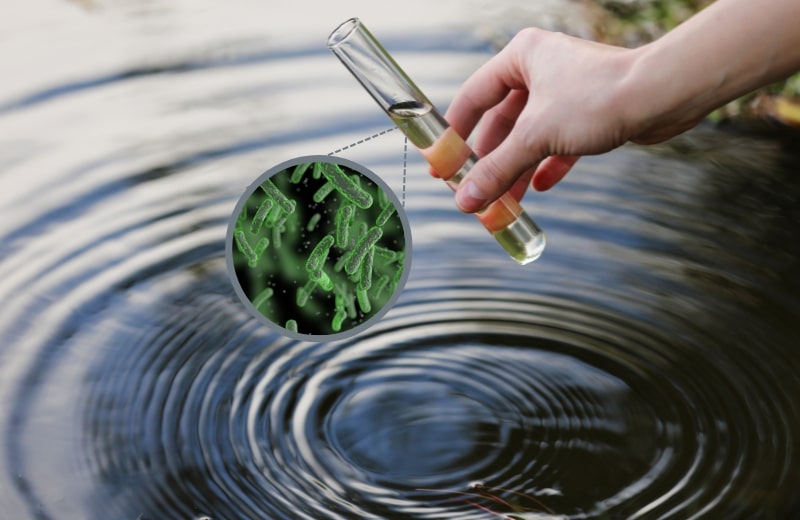
Chromium-6
A 2010 study by the Environmental Working Group (EWG) detected hexavalent chromium in the tap water supplies of 89% of water samples tested from 31 of 35 cities across the U.S.
The EWG also cited a proprietary 2004 study by the Water Research Foundation, which found that hexavalent chromium was more likely to contaminate systems using groundwater wells than systems using surface water.
Possible health effects of chromium-6 ingestion in drinking water include liver and reproductive system damage, cancer, and delayed skeletal development in children.
Lead
We couldn’t find any studies specifically evaluating lead contamination in well water, but a study by the Natural Resources Defense Council estimated that nearly 60 million Americans may not know they’re drinking from the toxic metal in the present day.
Another study concluded that children living in U.S. households using private wells had higher lead levels in their blood and were at a higher risk of elevated blood lead levels than children who used regulated public drinking water.
Lead is considered unsafe at concentrations higher than 0 PPM due to its toxicity, carcinogenic effects, ability to damage the body’s organs, and more.
Mercury
A study on mercury concentrations in U.S. groundwater referenced by the WHO found that a “small number” of groundwaters and shallow wells contained concentrations of mercury that exceeded the EPA’s MCL.
Some of the health effects of mercury exposure include chest pain and respiratory problems, weight loss, headaches, weakness, and stomach irritation.

Pesticides
A 2021 study on pesticides in groundwater wells used for public supply across the U.S. found that pesticide compounds commonly occur in well water, but only a small number of compounds were present in “levels approaching human-health concern”, and only in some wells.
Chronic exposure to pesticides in water has been linked to reduced immunity, hormonal interruptions, reproductive issues, carcinogenic effects, and more.
Radionuclides
A 1998 USGS survey of selected radionuclides in groundwater used for drinking found that about 30%, 33%, and 26% of the samples collected contained more than 1 pCi/L of radium-224, radium-226, and radium-228, respectively. About 5% of the samples exceeded 10 pCi/L of radium-224.
Different radionuclides have different potential health concerns in water. Many are known to damage tissues in the body and increase the risk of cancer.
📈 Well Water isn’t Regulated by the Government
Unlike municipal drinking water that’s treated by public water utilities, well water isn’t regulated by the Safe Water Drinking Act (SDWA), a law that was established to protect the quality of public water in the U.S.
Under the SDWA, the Environmental Protection Agency (EPA) regulates the concentrations of contaminants with known health effects by establishing legal limits for these contaminants and monitoring states, local authorities, and suppliers of public drinking water systems.
Private wells aren’t regulated by the EPA, and it’s the responsibility of the well owners to test and treat their drinking water.
That doesn’t mean that well water is definitely unsafe to drink – a lack of regulation doesn’t guarantee contamination. But it does mean that untreated well water is more likely to contain contaminants in dangerous concentrations than treated, regulated city water. That’s why it’s important for well owners to test their water for impurities with health concerns and act accordingly if anything is detected.
🚱 How Do Contaminants Get into a Well?

There are several ways that contaminants and pollutants can get into private well water systems:
- From surface runoff, such as from rainfall or snowmelt, underground seepage, or washing contaminants into the well system. Harmful bacteria, heavy metals, and chemicals can all enter well water this way.
- Through spills and improper waste disposal. Organic chemicals like pesticides and herbicides often enter well water systems from spills.
- From human activities like mining and power production. Radionuclides, chemicals, and heavy metals can enter well water from these sources.
- Through leaking septic tanks or animal waste disposal systems, especially if a well is positioned too close to one of these systems. Coliform bacteria like E. Coli and other microorganisms can enter a private well in this manner.
- Natural contamination from the earth. Fluoride, manganese, iron, and other naturally occurring chemicals and minerals are found in the rocks and soils surrounding the well aquifer.
- Leaching from well/plumbing systems, which may cause traces of lead, copper, and other metals to enter your water. This is especially likely if you have old plumbing and acidic well water (with a low pH).
🔎 How to Check if Well Water is Safe
There are five ways to determine the safety of your well’s drinking water.
Consider the Well’s Location
First, assess your well’s location.
The CDC has shared a guide to well positioning, which says that wells should be located:
- At least 50 feet away from livestock yards, silos, septic tanks, and leach fields
- A minimum of 100 feet away from liquid-tight manure storage, fertilizer and pesticide storage, and petroleum tanks
- At least 250 feet away from manure stacks
Determine When the Well was Built
The age of your well may also determine the safety of its drinking water.
Newer wells are typically safer than older wells because they’re constructed with modern materials and equipment. Old wells may have been built with materials we now know to be unsafe, like lead, a toxin that can enter water due to the corrosion of pipes and plumbing.
Wells constructed decades ago are also more likely to show signs of wear or damage that could compromise their structural integrity, making it easier for contaminants to enter the water.
Assess the Well’s Maintenance & Servicing History
Your well’s history of servicing and maintenance, including testing the water and inspecting/repairing well equipment as necessary, will also help you to analyze the likely safety of your drinking water.
The CDC says that well owners should check and test their wells at least once a year for cleanliness, mechanical problems, and the presence of nitrates/nitrites, coliform bacteria, and any other contaminants that are known to compromise local drinking water quality.
If you’ve just moved to a property with a well or you can’t remember the last time you got your well inspected, arrange an inspection as soon as possible.
Evaluate the Well Water Source
The location of the well aquifer is another factor that can affect the quality of well water, so do a deep dive into your well aquifer’s location.
The USGS has produced a map of the U.S. which shows the areas that are most likely to have groundwater contamination issues.
Test Your Water
Testing your water is the best way to determine which contaminants your ground water supply currently contains.
If you’ve never had your well tested before, or you’re moving into a new home with a well, get your well tested as soon as possible.
According to the CDC, after initial testing, you should get your well tested once every year for total dissolved solids, nitrates, coliform bacteria, and alkalinity. Why is routine testing necessary? Contaminants in private wells can fluctuate based on local geological conditions and human activities.
You should also get your well water tested…
- When you carry out a repair or replacement in your well system
- If you’re alerted that your local ground water has been polluted
- If local land disturbances or flooding have potentially contaminated your well
- If your water taste, odor, or color has changed
The Environmental Protection Agency has a list of state-certified laboratories that allows you to search for testing laboratories based on where you live.
We recommend Tap Score, a health services company founded at the University of California in Berkeley, which offers three tiers of well water testing depending on the contaminants you need to test for.
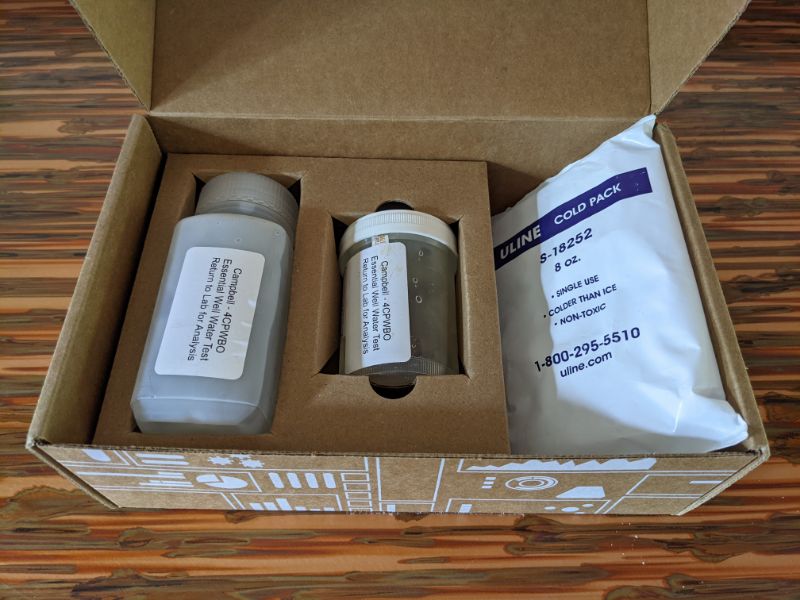
🌀 How To Make Well Water Safe To Drink
The most effective water treatment methods for private wells are water filters and water disinfection systems.
Whole House Water Filtration System
Whole house well water filters use a combination of filter media to remove a range of contaminants from private wells.
A whole house filtration system may use filter cartridges, or oxidation/filtration processes, like air injection, to remove sediment, iron, sulfur, manganese, heavy metals, organic contaminants, and other dissolved minerals.
Whole house filters trap contaminants in their filter media. Depending on the type of water filtration system you buy, you’ll need to replace the filters or set the unit to regenerate or backwash when the media becomes saturated with contaminants.
👨🏼🔧 You can learn more about whole house water filters in our best well water filtration system guide.
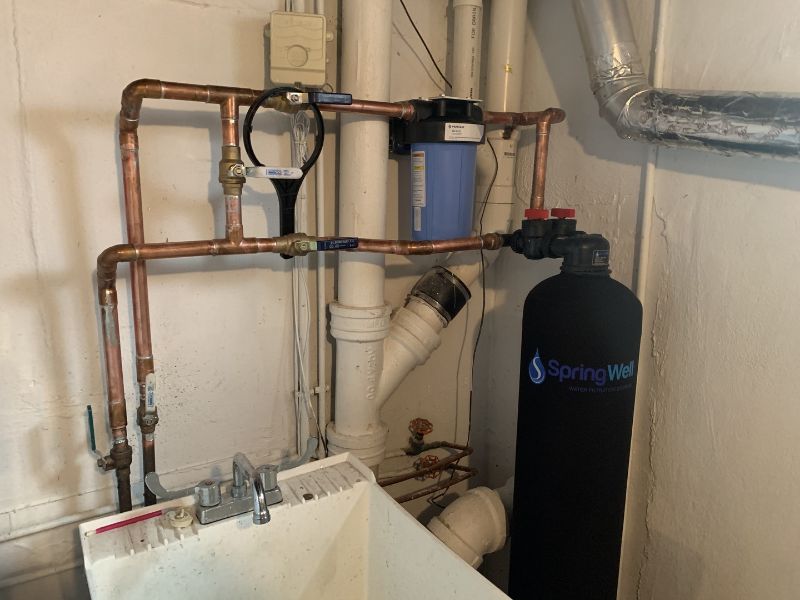
Reverse Osmosis System
Reverse osmosis systems remove more contaminants than the average whole-house water filter. The complex design of a reverse osmosis water filter enables it to trap contaminants of all sizes, allowing only tiny water particles to pass through.
RO systems use several filtration stages, including a carbon water filter, a pre-filter, and a semi-permeable membrane. The membrane contains thousands of tiny pores, which deflect contaminants in water flowing through the system.
Point-of-use RO water filters, such as under-sink RO filters, are more common than whole-home filters. Well water may require pre-treatment, especially if it has high iron or hardness concentrations, before it can be effectively filtered in an RO system to prevent damage to the membrane.
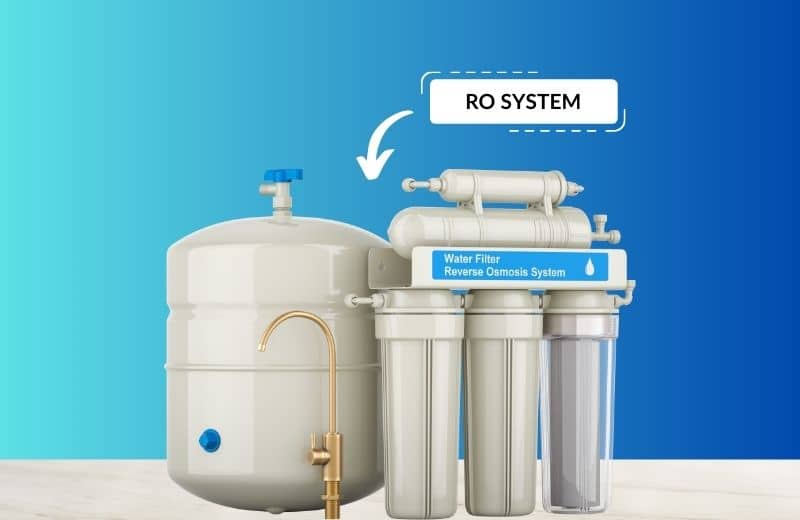
Disinfection System
Disinfecting well water kills microorganisms like bacteria and viruses that could be present in the water supply.
Chemical treatment mimics the disinfection process that takes place in large-scale public water treatment facilities.
For home use, chemical treatment systems inject measured amounts of chemicals like chlorine into the water. This water is stored in a tank to allow the chemicals time to take effect before being delivered around your home.
UV treatment is a low-maintenance alternative to chemical treatment. A UV purification system uses ultraviolet light to alter the DNA of disease-causing pathogens, killing them and preventing them from reproducing.
You can install a UV lamp at your home’s point of entry. When water flows through the chamber, the ultraviolet light disinfects water instantly.
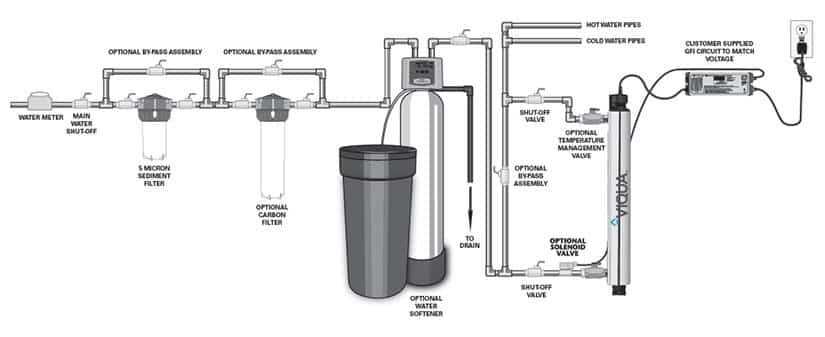


My aunt recently moved to a rural area where access to municipal water is limited. She’s tired of relying on expensive bottled water and wants a more sustainable solution for her home. So, she’s considering getting a well water system installed to ensure a steady and reliable water supply. I should warn her though that excess minerals in hard water generate surface deposits known as scale, which mask pinhole leaks and portions of corroded pipe due to corrosive water when they accumulate over time on pipes and in appliances.
You are exactly on point! You can share this article about limescale with her too https://waterfilterguru.com/what-is-limescale/